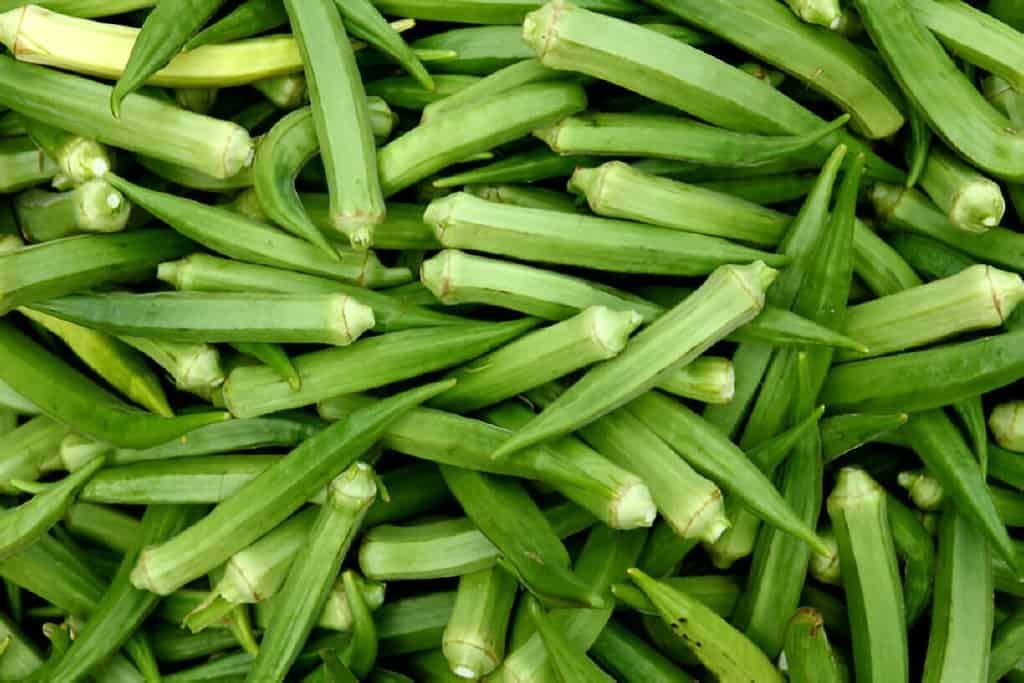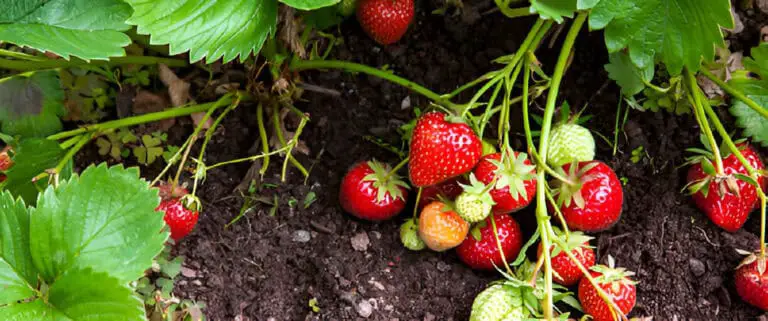What Type Of Vegetable Is An Okra? Is It a Root Vegetable?

If you’ve ever found yourself in the produce aisle, staring at a basket of okra and wondering if it belongs among root vegetables, you’re not alone. The confusion surrounding okra’s classification is more common than you might think. Is this beloved, slimy staple of gumbo really sprouting from the earth like a carrot or beet? Or does it belong to a different botanical family altogether?
It can be fascinating and essential for food lovers, gardeners, vegetarians, and botany buffs to understand okra’s place in vegetable classification. This question tugs at the heartstrings of culinary traditions and scientific curiosity.
Join us as we dig deep into the roots—pun intended—of this green mystery. We will uncover if okra deserves its place with turnips and radishes or if it’s been misunderstood. Read on to unveil the true identity of okra and savor every bite of knowledge as we slice through myths and facts alike!
What Makes a Vegetable a Root Vegetable?
Root vegetables are characterized by their growth pattern and the part of the plant that is harvested for consumption. These vegetables grow underground, with the edible portion being the thickened root, or tuber.
This storage organ allows the plant to store nutrients and energy. This supports the above-ground foliage’s growth during active photosynthesis. Root vegetables typically have robust underground parts. These parts are mainly carbs like starches and sugars. They make the vegetables substantial sources of energy.
Some common examples provide an easy reference for understanding what qualifies as a root vegetable. Carrots are among the most well-known root vegetables, recognized for their orange taproot that is both sweet and nutritious. Potatoes are another prime example; although slightly different from typical roots, they are tubers providing significant amounts of starch used widely in many diets globally.
Other notable mentions include beets. They are known for their deep red bulbs, which are packed with antioxidants. Also, sweet potatoes have distinctive orange flesh full of vitamins A and C.
They are typically divided into types such as taproots (like carrots and turnips), tubers (like potatoes), corms (like taro), and rhizomes (like ginger). These examples make clear what defines a root vegetable.
Each type has unique features but shares the fundamental characteristic that it grows beneath the soil surface. Understanding these key aspects sets the stage for accurately determining if okra falls into this category. This is based on its growth and anatomy.
Botanical Classification of Okra

To understand whether okra is a root vegetable, it’s essential to first look at its botanical classification. Scientifically known as Abelmoschus esculentus, okra belongs to the Malvaceae family, which also includes hibiscus and cotton. This puts okra in the dicot family. It is known for its flowering plants with two seed leaves. This is unlike many traditional root vegetables, which often belong to groups like Apiaceae (carrots) or Convolvulaceae (sweet potatoes).
Exploring further into the taxonomy, okra is classified under the genus Abelmoschus. Within this genus, okra is mostly grown for its edible green pods rather than any part of the plant beneath the soil. Root vegetables are typically defined by their primary growth in underground parts like tubers or taproots, which store nutrients and energy.
Common examples include carrots (Daucus carota), beets (Beta vulgaris), and radishes (Raphanus sativus). Unlike these root vegetables, the main consumable part of an okra plant grows above ground.
When it comes to fitting within traditional criteria for root vegetables, okra clearly stands apart. Root vegetables usually have modified roots. The roots expand and store starches and other carbs. These are critical for survival through dormancy. Okra, however, does not follow this pattern; instead, its pods grow above ground with roots functioning similarly to most annual plants—absorbing water and nutrients rather than acting as major storage organs.
So, botanically, okra has much to offer in cooking and nutrition. But, it is not a root vegetable.
Understanding Okra’s Growth Anatomy
To comprehend why okra is not considered a root vegetable, it’s crucial to understand how and where it grows. Okra (Abelmoschus esculentus) is often called “lady’s finger.” It is a flowering plant that thrives in warm, tropical climates.
The most conspicuous part of the okra plant is its long green pods containing numerous seeds, which grow above ground on tall, sturdy stems. These pods are what we consume when we prepare dishes like gumbo or bhindi masala. While the roots of the okra plant are essential for nutrient uptake and stability in the soil, they are not harvested or consumed as part of our diet.
Okra’s growth pattern differs from that of root vegetables like carrots, beets, and potatoes. Root vegetables are mainly known for their edible parts. These parts are enlarged storage organs that develop underground. For instance, a carrot’s orange taproot stores nutrients, and this taproot is what ends up on our plates.
Okra is different. Its main edible part is its fruiting body. These are the green pods that grow on above-ground stems.
Also, knowing the okra’s lifecycle can provide insight. It can show why it doesn’t fit the root vegetable category. Okra plants produce flowers. The flowers develop into seed pods through pollination by bees and other insects. This process is typical of fruits but different from root crops. Root crops focus mainly on growing large amounts of biomass underground.
Thus, both root vegetables and okra need adept soil management for healthy growth. But, their differing anatomy puts them in separate plant categories.
Culinary Uses vs. Botanical Category
Okra is known for its slimy texture and unique flavor. It is a beloved ingredient in culinary traditions worldwide. In Southern American cuisine, it is an essential component of gumbo, where its thickening properties shine.
Meanwhile, Indian dishes often use okra in stir-fries or curries. For example, Bhindi Masala showcases its ability to absorb spices and add to richly flavored meals. The vegetable has many uses in recipes. These go beyond these regions. It’s also used in Mediterranean stews and African soups.
Despite its widespread use in kitchens worldwide. There is a gap between how okra is classified in botany and in cooking. Botanically speaking, okra belongs to the mallow family (Malvaceae) and is not a root vegetable but rather a flowering plant producing edible seed pods.
But, in many culinary settings, exact plant categories are less important. Cooks prioritize the texture, flavor, and cooking methods suitable for their dishes.
Culinary practices blur the lines when categorizing vegetables. They focus on their function in recipes, not strict botany. True root vegetables like carrots and potatoes grow underground and store nutrients in their roots. Okra provides value through its above-ground pods.
This difference shows that while science categories matter for plant biology and agriculture, chefs and home cooks use categories based on cooking and versatility in the kitchen.
Exploring how we classify vegetables by botany and culinary tradition helps enthusiasts. It shows why certain ingredients are used in specific ways, despite technical definitions.
Knowing these distinctions gives us deeper knowledge about our food systems. It also helps in crafting flavorful meals with ingredients like okra. We celebrate okra not for where it grows but for how well it graces our plates.
Nutritional Value and Health Benefits
Okra, often recognized for its slimy texture when cooked, packs a nutritional punch that rivals that of many other vegetables. A single cup of raw okra contains about 33 calories and is rich in fiber, providing around 3 grams. It’s also an excellent source of vitamins C and K1, which play crucial roles in immune function and bone health, respectively.
Additionally, okra has lots of magnesium, folate, and vitamin A. This nutrient mix makes it a valuable addition to the diet for supporting health.
When comparing okra to typical root vegetables like carrots or sweet potatoes, it’s clear that each has unique benefits. For example, while carrots are renowned for their high beta-carotene content, which is vital for eye health, okra provides mucilage—a gel-like substance beneficial for digestive health. Sweet potatoes excel in their vitamin
Content due to beta-carotene as well but lacks the same level of soluble fiber found in okra’s mucilage. Thus, incorporating both root vegetables and okra can offer a diverse range of nutrients that complement each other.
Another fascinating comparison is in mineral content. Root vegetables, such as beets, are known for their high iron levels. This iron is beneficial for preventing anemia. Okra doesn’t quite match up in iron content but shines with its high magnesium levels, which are essential for muscle function and heart health.
Moreover, unlike many root vegetables, which store carbs as starches and sugars, adding to calorie intake, okra is low-calorie. It supports weight management efforts without losing nutrient density.
Many argue about the merits of one vegetable over another based on taste or cooking ease. But, from a purely nutritional standpoint, both okra and root vegetables offer distinct yet complementary benefits. They can boost dietary quality when added thoughtfully to meals.
Debunking Myths About Okra as a Root Vegetable
A prevalent myth in the world of vegetables is the categorization of okra as a root vegetable. This misconception often arises because of its culinary versatility. It is commonly lumped with crops like carrots, turnips, and potatoes. However, an in-depth look at botanical classifications quickly dispels this myth. Unlike root vegetables, which grow under the soil and store nutrients mainly in their tubers or roots, okra plants produce fruit pods above ground on tall, leafy stems.
Botanical experts are clear that okra falls into the category of flowering plants known as angiosperms. Specifically, it enjoys lineage under the Malvaceae family, closely related to hibiscus and cotton. Dr. Jane Smith from the Botanical Society clarifies: “Classifying okra well shows our grasp of plant shapes. These facts help us spot where each food fits into our diets. Okra bears fruit above ground, not underground. This makes it clear that okra is not a root vegetable.
The evidence is from plant anatomy textbooks and horticultural guides. They show why okra cannot be a root vegetable. Also, many cultures use okra’s pods, not its parts below the soil. This aligns its usage with fruit-bearing plants, not those focused on underground growths.
Peeling back layers removes confusion. It also shows how distinct but equally important all plant types are in our diets.
Debunking these myths is based on expert opinions and botanical evidence. Through this, we can better understand where different plants fit in taxonomic frameworks. It’s illuminating to dissect such myths. They reveal the true nature of ingredients like okra.
The Versatility of Okra in Various Cuisines
Okra has a big global culinary presence. It’s truly remarkable. This versatile vegetable has made its mark in many traditional dishes across continents. In the southern United States, okra is a beloved staple, featured prominently in dishes such as gumbo and fried okra.
In these recipes, okra’s gooey texture is a natural thickener. It gives stews and soups their rich taste. Similarly, in nutrient-rich West African cuisine, okra shines. It stars in classic dishes like Nigerian okro soup and Ghanaian banku and okro stew. Both highlight how local chefs utilize every bit of the plant to create flavorful and hearty meals.
Traveling eastward to Asia, we find that okra has carved out a special place in Indian kitchens. Locally, it’s known as “bhindi.” It’s often stir-fried with spices to make tasty bhindi masala. Or, it’s put into curries with rice or flatbreads.
The Japanese also love okra for its health benefits and texture. They add lightly cooked or grilled slices to salads or serve them tempura-style for a crispy bite. In Middle Eastern cuisines too, particularly in Turkish cooking, it finds its way into savory stews like bamya (okra stew), often cooked with lamb or beef for an added layer of depth.
Even Mediterranean countries have embraced this green pod’s versatility. Greeks add it to traditional dishes. For example, they make bamies latheres me domata, which is okra cooked in tomato sauce. This shows again how well this ingredient adapts to different flavors and cooking methods. Whether served spicy, tangy, sautéed, or baked—okra proves adaptable beyond cultural boundaries.
These culinary traditions are diverse. They show that while plant types are important for science, they only slightly touch on a vegetable’s role and impact on global tastes. Okra is an ingredient steeped in cultural heritage. It is also a versatile component. It can unite many cuisines in one tantalizing bite.
Conclusion: Unveiling the True Identity of Okra
We’ve looked at the confusion and myths about okra’s classification. Many people think it’s a root vegetable. We’ve clarified that root vegetables have edible roots. They grow underground. Examples are carrots and potatoes. However, okra doesn’t fit this definition; it is a flowering plant whose edible part is its seed pod.
Understanding okra’s classification and growth helps us see it accurately in cooking, not just botany. Nutritional comparisons further reveal its unique value, distinct from traditional root vegetables.
We now debunk myths. We also show the importance of proper classification. As a result, we now appreciate Okra’s true identity. We also see its versatility and rich role in global cuisine.
You’re enjoying dishes with this vibrant ingredient. Let’s celebrate the diversity and complexity of vegetable types. Whether you’re a gardener, chef, or food enthusiast, knowing your veggies helps deepen appreciation for what ends up on our plates. So here’s to savoring every bite of okra with newfound knowledge and enriched taste buds!






